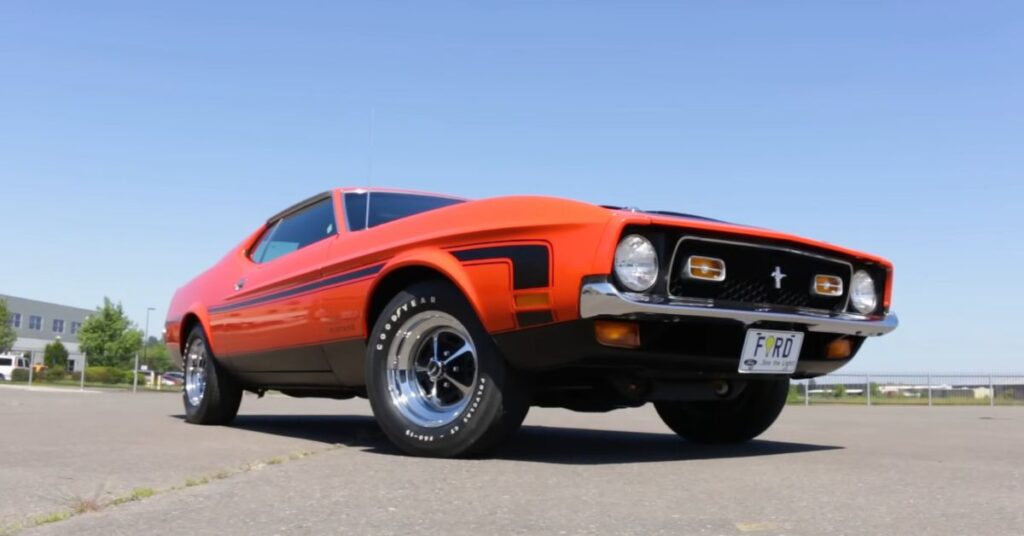In the realm of American muscle cars, few models are as revered and iconic as the Ford Mustang. Throughout its rich history, the Mustang has captured the hearts of car enthusiasts worldwide. In this article, we will delve into the captivating story of the 1971 Ford Mustang BOSS 351, a true symbol of power, performance, and style.
The Evolution of the Ford Mustang
1971 marked an important milestone in the history of the Ford Mustang. The design underwent significant changes, resulting in a longer, wider, and heavier version of the iconic pony car. Ford aimed to cater to their growing customer base, which desired a spacious vehicle without compromising the Mustang’s sporty nature. This led to the birth of the 1971 Ford Mustang, featuring a fresh and distinctive design.
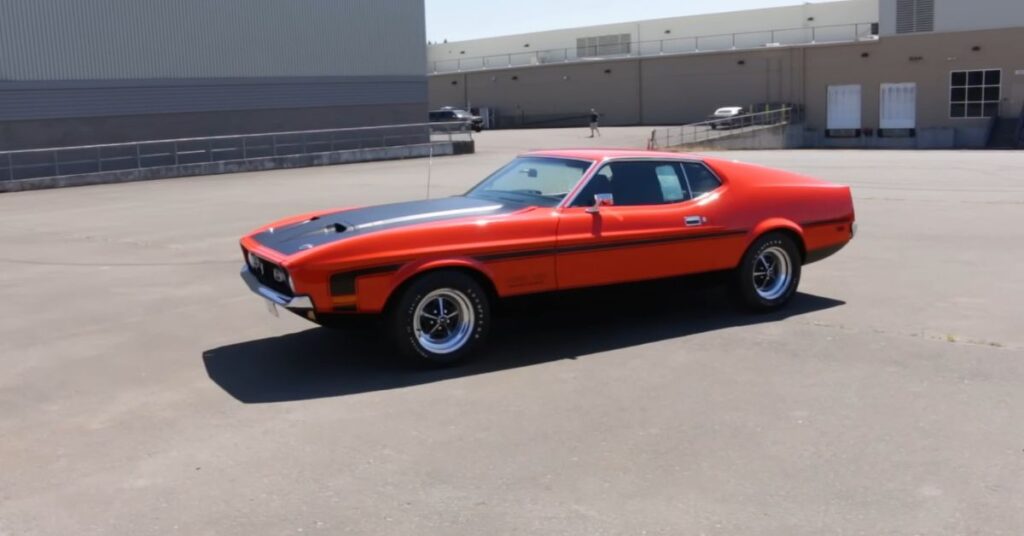
The early 1970s saw the decline of the muscle car era, with various factors contributing to its downfall. Stricter fuel regulations, emission requirements, and rising insurance premiums for high-performance vehicles posed significant challenges. However, amidst this changing landscape, the 1971 Ford Mustang BOSS 351 emerged as a true champion.
The Powerful Boss 351 Engine
At the heart of the 1971 Ford Mustang BOSS 351 resided a powerhouse of an engine. The 351 Cleveland V8 engine boasted an impressive compression ratio of 11.7:1. Equipped with a factory aluminum intake manifold, a special Autolite 4300 B 750 CFM carburetor, a solid lifter cam, and high-flowing large valve Cleveland cylinder heads, the BOSS 351 produced a staggering 330 horsepower at 5400 rpm and 370 pound-feet of torque at 4000 rpm.
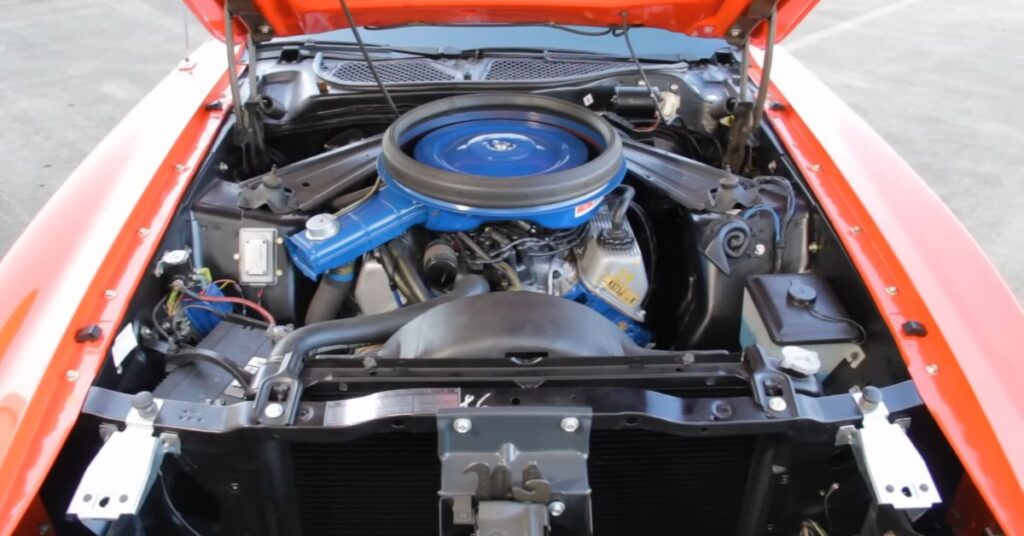
These figures placed the BOSS 351 in the realm of big-block engines, enabling it to achieve mid-13 second quarter-mile times and quick acceleration. The bottom ends of the engine were built for strength, featuring forged connecting rods held by 3/8 bolts and a nodular cast iron crank secured by four-bolt main caps. The BOSS 351 left no room for powertrain options, as all models were equipped with wide ratio top loader four-speed transmissions and heavy-duty clutches. The nine-inch traction lock rear ends with 3.91 gears provided excellent power delivery and added to the car’s overall performance.
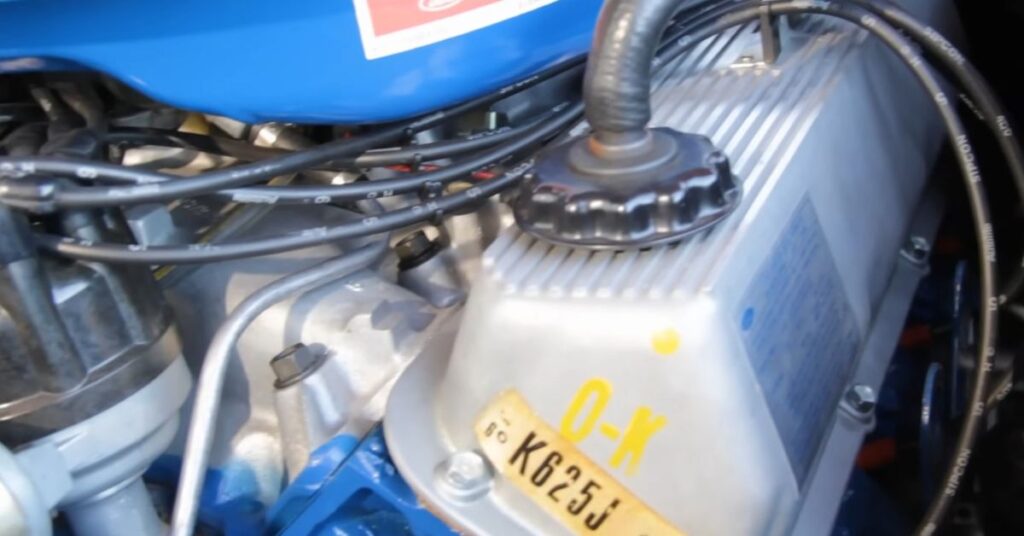
The suspension of the BOSS 351 was tuned for competition, offering nimble handling and enhanced control. It featured sway bars both at the front and rear, stiffer springs, and specially tuned shocks. The rear suspension was staggered, ensuring maximum traction and stability during acceleration. The braking system was equally impressive, with power-assisted 11.3-inch front discs and oversized rear drums. The BOSS 351 showcased its performance potential with either stamped steel wheels with caps or optional chrome Magnum 500 wheels, all wrapped in F60 15-inch wide oval tires, which remain original on many surviving models today.
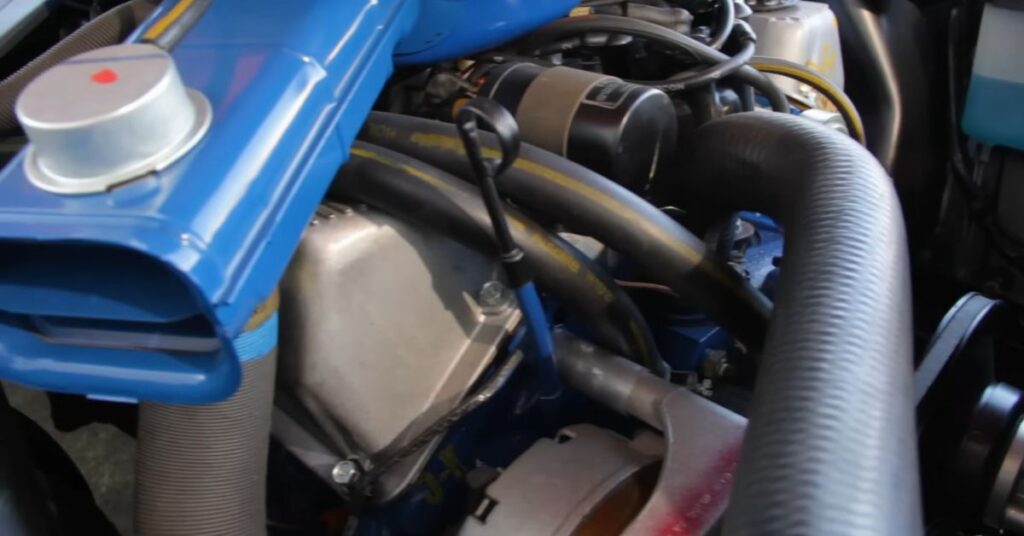
The 1971 Ford Mustang BOSS 351 stood out not only for its incredible performance but also for its striking appearance. The BOSS package included various design enhancements, such as a nearly all-black hood with RAM air scoops, a lower front spoiler, and a distinctive black honeycomb grille featuring dual sport lamps. The sides of the car were adorned with black BOSS 351 stripes, accentuating its aggressive stance. The rear panel received the blacked-out treatment, further emphasizing the car’s bold presence. Optional features included a rear wing and body-colored front bumper, while the standard black boss 351 decal on the rear added a touch of visual flair. Inside, the BOSS 351 boasted a range of options, including the performance instrumentation group with gauges positioned in the center of the dashboard, high-back bucket seats for added comfort, and the optional sport deck rear seat for enhanced passenger convenience.
Impressive Performance and Handling
The 1971 Ford Mustang BOSS 351 was a true force to be reckoned with when it came to performance. With its powerful 351 Cleveland V8 engine delivering 330 horsepower and 370 pound-feet of torque, the BOSS 351 packed a punch on the open road. Its impressive acceleration and mid-13 second quarter-mile times made it a formidable competitor in the muscle car realm. Whether it was tearing down the straightaways or navigating tight corners, the BOSS 351 showcased exceptional performance that left drivers exhilarated and wanting more.
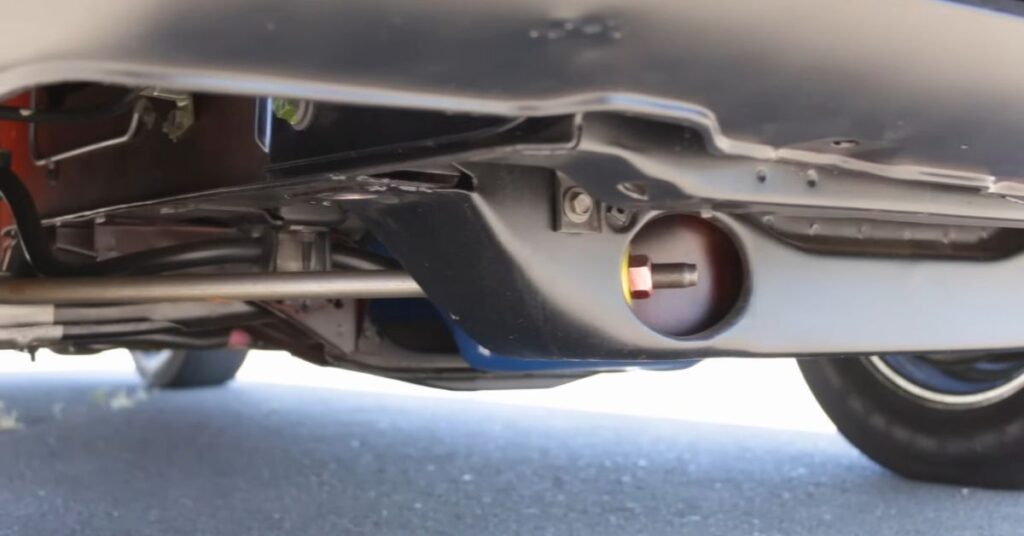
Handling was a key aspect that set the BOSS 351 apart from its counterparts. The suspension was finely tuned for competition, with sway bars at the front and rear, stiffer springs, and specially tuned shocks. This setup allowed for precise control and minimal body roll, ensuring the BOSS 351 stayed planted to the ground even during aggressive maneuvers. The staggered rear suspension, along with the wide oval tires and nine-inch traction lock rear ends, provided excellent traction and stability, enabling drivers to unleash the full potential of the car’s power without compromising control.
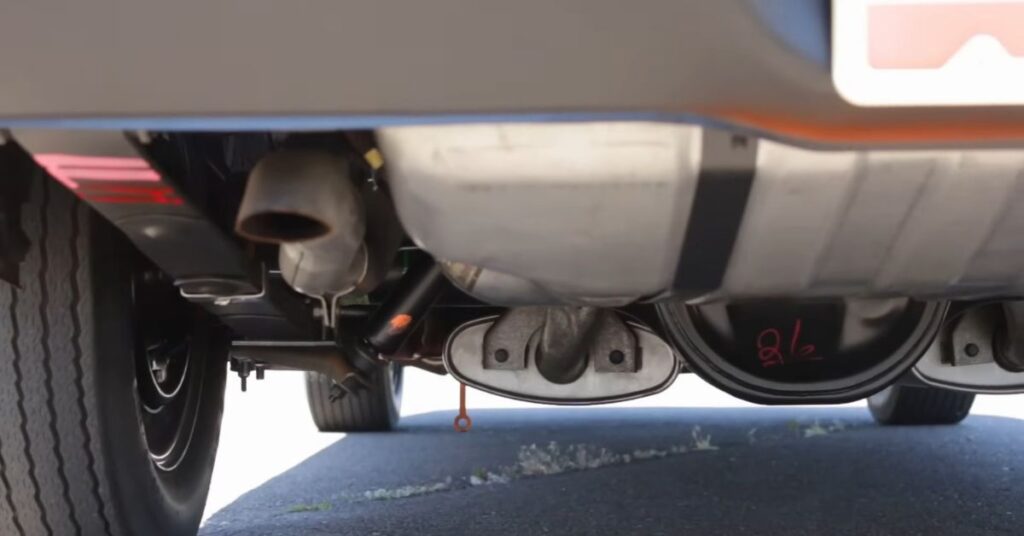
The braking system of the BOSS 351 was designed to match its impressive performance. Equipped with power-assisted 11.3-inch front discs and oversized rear drums, the BOSS 351 offered exceptional stopping power. Whether decelerating from high speeds or navigating through city traffic, the braking system delivered confident and responsive stopping capabilities. Combined with its competition suspension and precise steering, the BOSS 351 provided a thrilling driving experience that instilled confidence in the driver and allowed for precise control in any situation.
Wheels
The wheels of the 1971 Ford Mustang BOSS 351 were carefully selected to complement its powerful performance and enhance its aggressive appearance. The BOSS 351 featured a choice between stamped steel wheels with caps or optional chrome Magnum 500 wheels. These wheels added a touch of flair to the car’s overall design, while also providing durability and strength. The chrome Magnum 500 wheels, in particular, were highly sought after for their iconic retro look and their ability to elevate the BOSS 351’s aesthetic appeal.
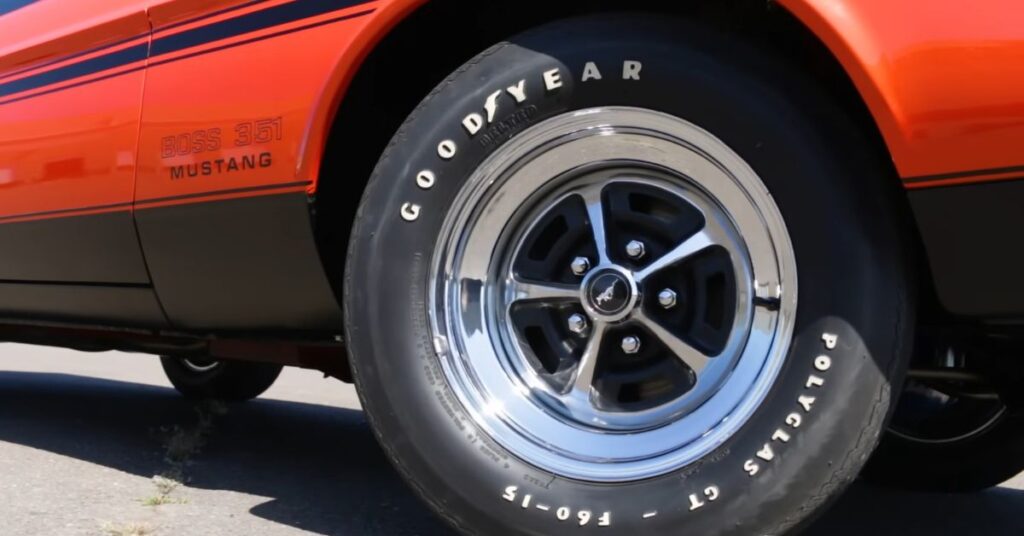
A crucial component in the engine’s performance of the BOSS 351 was its camshaft. The camshaft played a vital role in controlling the timing and duration of the engine’s valve openings, directly impacting its power and efficiency. In the case of the BOSS 351, it featured a solid lifter camshaft that was specifically designed for high-performance applications. This camshaft, in conjunction with the other engine components, allowed for optimal airflow and fuel mixture, resulting in the impressive horsepower and torque output of the BOSS 351.
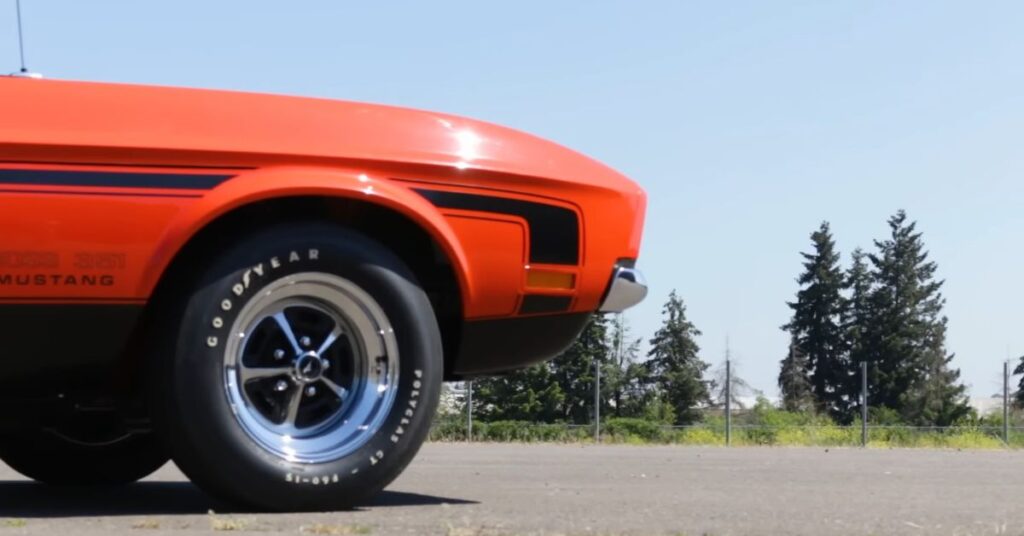
The camshafts used in the BOSS 351 were meticulously crafted and engineered to meet the demands of performance enthusiasts. With its high lift and duration, the camshaft provided a unique and aggressive sound signature, further enhancing the driving experience. The precise specifications of the camshaft, combined with other performance-oriented features like the special Autolite 4300 B 750 CFM carburetor and large valve Cleveland cylinder heads, contributed to the BOSS 351’s ability to deliver exceptional power and performance both on the street and the track.
Stylish Design and Iconic Features
The exterior of the 1971 Ford Mustang BOSS 351 exuded a commanding and aggressive presence. Its design elements were carefully crafted to reflect its high-performance nature. One of the standout features was the blacked-out hood with RAM air scoops, which not only added to its visual appeal but also served a functional purpose by directing cool air into the engine bay. This design cue emphasized the car’s performance-oriented DNA and hinted at the power that lay beneath the hood.
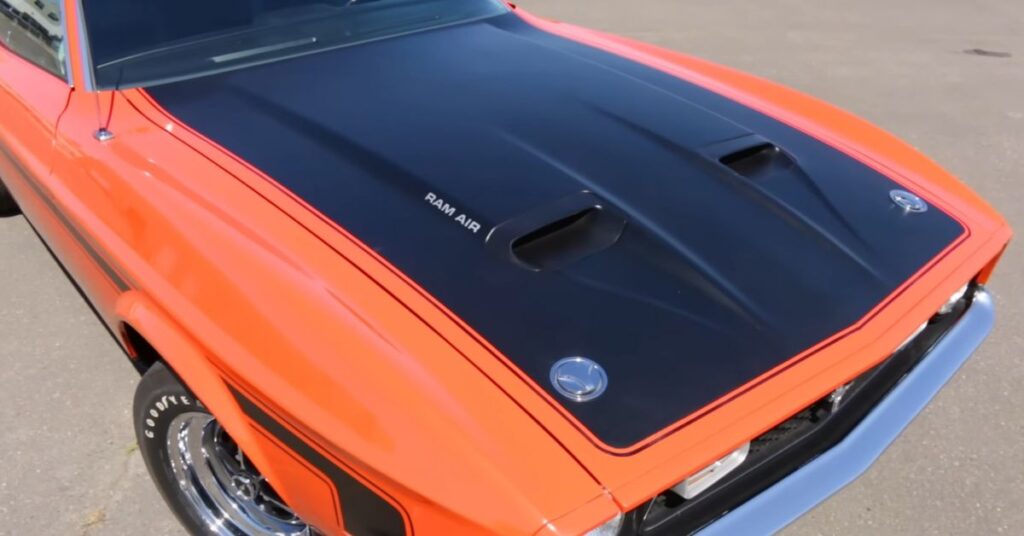
The front fascia of the BOSS 351 boasted a striking grille design. Dual sport lamps were nestled within the black honeycomb grille, creating a visually captivating front end. The black honeycomb grille itself added a touch of menace and enhanced the car’s aggressive look. It was a defining characteristic of the BOSS 351’s exterior and immediately caught the attention of onlookers.
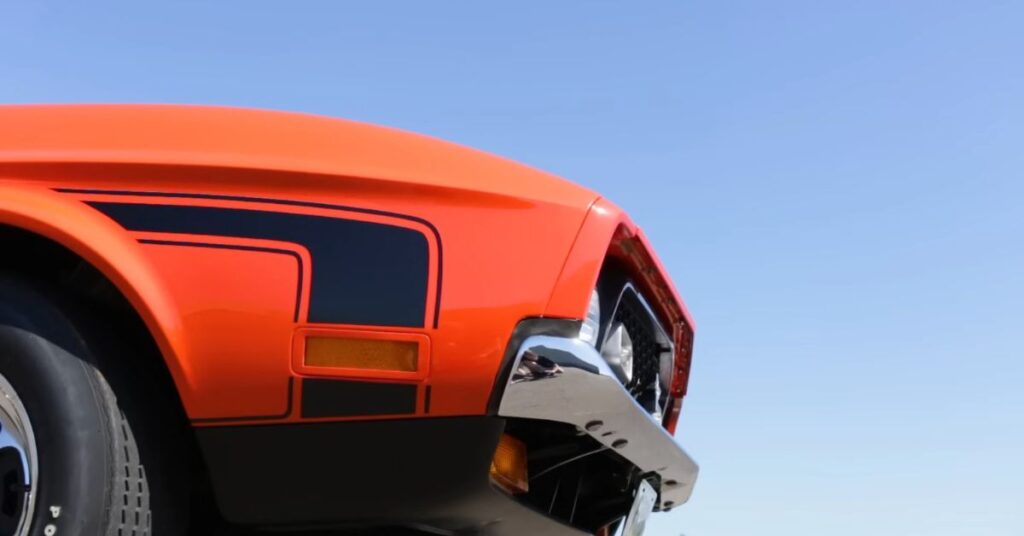
The BOSS 351 also featured distinctive BOSS 351 stripes that ran along the sides of the car. These bold racing stripes not only added a visual flourish but also paid homage to the car’s performance heritage. The stripes were a subtle yet impactful touch that further accentuated the car’s muscular stance and made it instantly recognizable on the road.
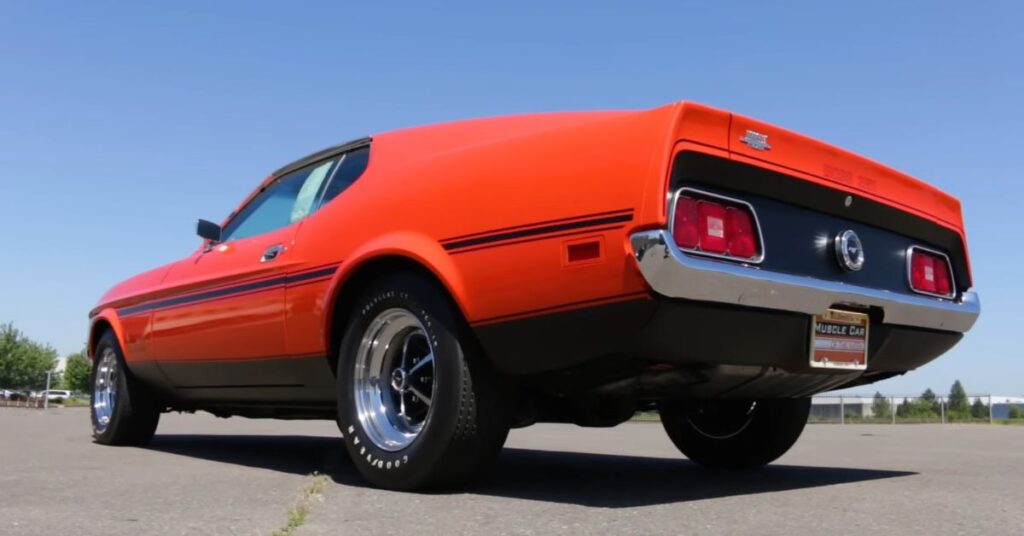
Optional features were available to further enhance the exterior of the BOSS 351. One such option was a rear wing, which added a sporty flair and improved aerodynamics. It not only enhanced the car’s performance at higher speeds but also added to its overall aesthetic appeal. Additionally, chrome Magnum 500 wheels were offered as an option, providing a classic and eye-catching look that perfectly complemented the BOSS 351’s aggressive styling. These optional features allowed owners to customize their BOSS 351 to their personal preferences and make a bold statement on the road.
The Boss 351’s Interior and Options
The interior of the 1971 Ford Mustang BOSS 351 was designed with a focus on performance and style. The car offered a range of options to enhance the driving experience. One such option was the Stereo Sonic 8-track tape system, which combined the nostalgia of classic audio technology with the convenience of an AM radio. This feature allowed drivers and passengers to enjoy their favorite music while cruising in the BOSS 351, adding an extra layer of enjoyment to the overall driving experience.
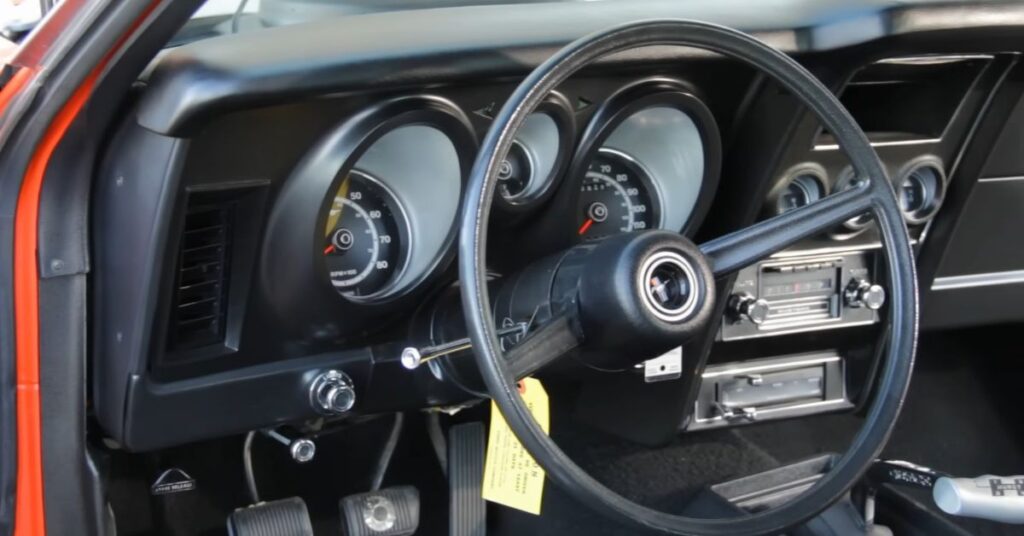
Positioned in the center of the dashboard, the performance instrumentation group was a prominent feature of the BOSS 351’s interior. This cluster of gauges provided essential information to monitor the car’s vital signs, including engine RPM, speed, and fuel level. The clear and easily readable gauges allowed drivers to stay informed about the car’s performance and make necessary adjustments, further enhancing the driving experience and sense of control.
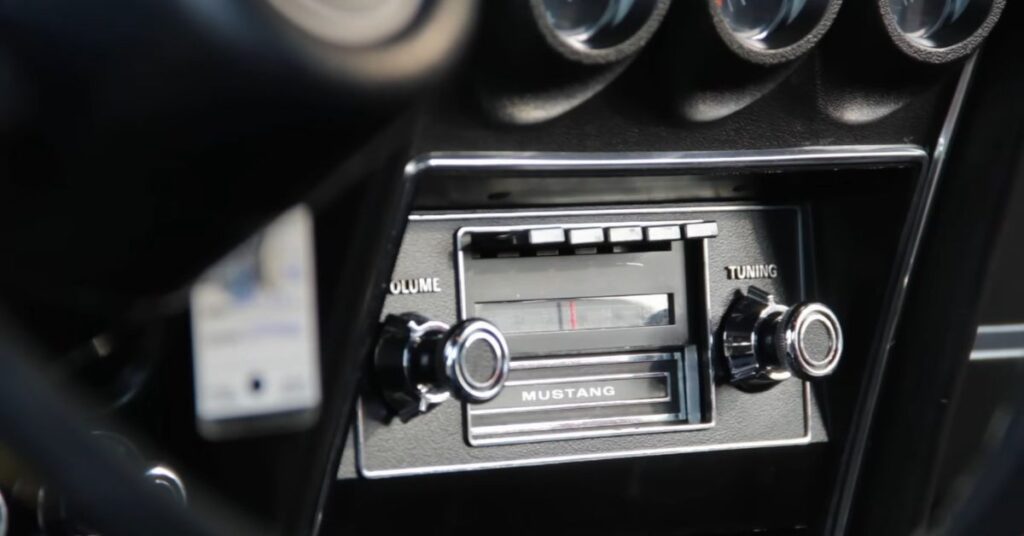
The BOSS 351 featured high-back bucket seats in the front, offering excellent support and comfort during spirited driving. These seats were designed to keep the driver and front passenger securely in place, even during high-speed maneuvers. Additionally, the optional sport deck rear seat provided added comfort and versatility, allowing for additional passengers or extra cargo space when needed. The thoughtful design of the seats ensured that both driver and passengers could enjoy the ride in comfort.
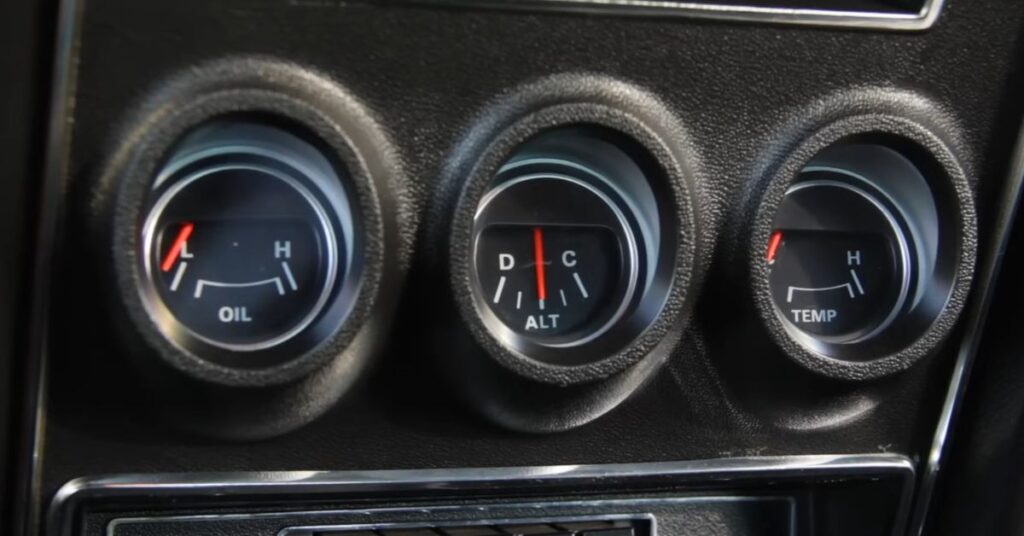
The interior of the BOSS 351 was crafted with attention to detail and quality materials. From the dashboard to the door panels, the interior featured high-quality finishes and durable materials, adding to the overall sense of luxury and refinement. The combination of comfort and quality in the interior design created an inviting space that made every drive in the BOSS 351 an enjoyable experience.
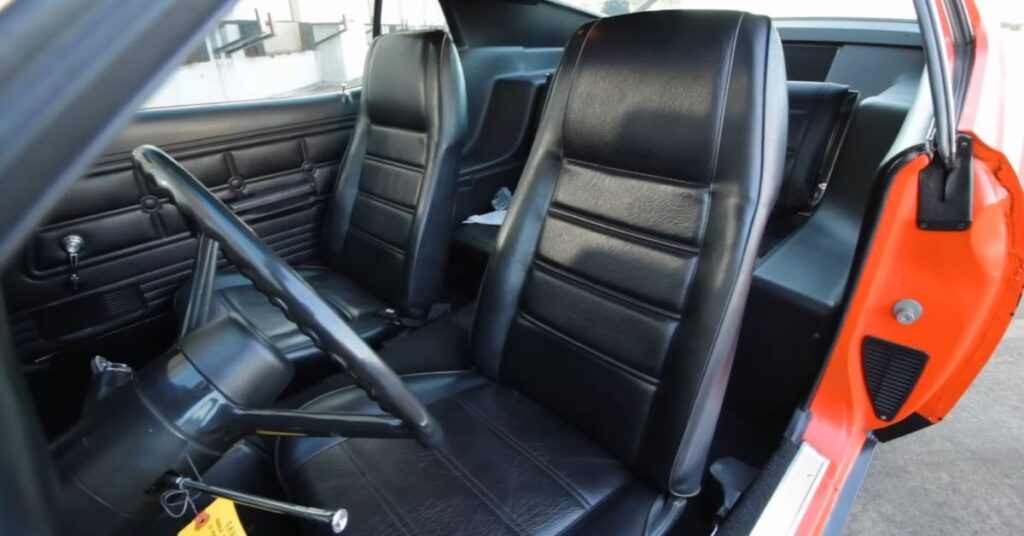
With its combination of performance-focused features and stylish design, the interior of the 1971 Ford Mustang BOSS 351 perfectly complemented the car’s overall character. Whether enjoying the nostalgia of the Stereo Sonic 8-track tape system or benefiting from the functionality of the performance instrumentation group, drivers and passengers were treated to a driving experience that seamlessly combined power, comfort, and luxury.
Rarity and Collectibility
The 1971 Ford Mustang BOSS 351 has become a highly sought-after collectible car in today’s market. Its rarity adds to its allure, as only a limited number of BOSS 351 models were produced. The combination of its powerful performance, distinctive design, and iconic status as a muscle car of its time makes it a true gem for collectors and automotive enthusiasts. The BOSS 351 represents an era of American automotive history that is revered and cherished, and owning one is like owning a piece of that history.
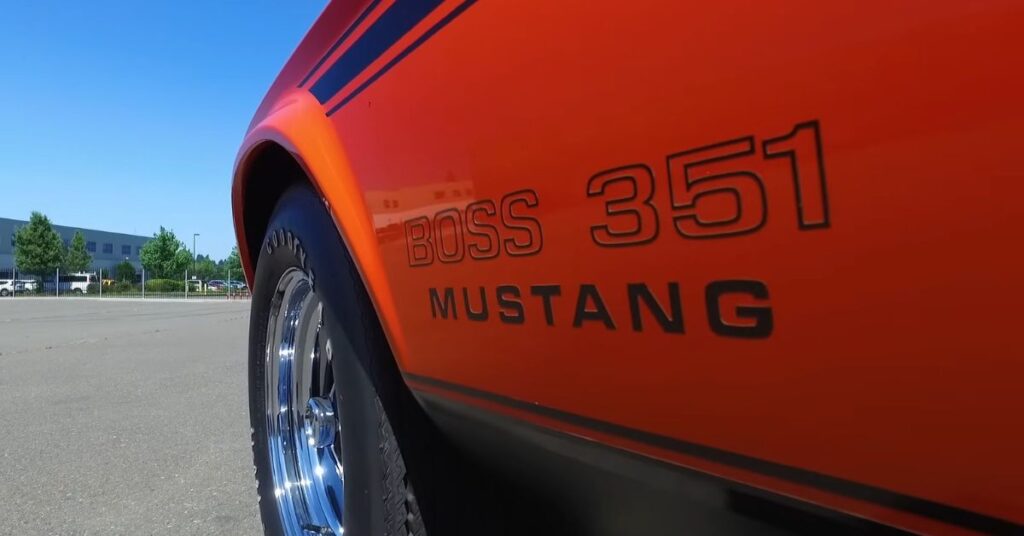
For collectors and enthusiasts, the opportunity to acquire a well-preserved BOSS 351 is a chance to experience the excitement and thrill of a bygone era. This iconic muscle car not only offers remarkable performance but also carries with it a sense of nostalgia and admiration. Its powerful engine, aggressive styling, and limited production numbers make it a standout among other classic Mustangs. As a result, the demand for the BOSS 351 remains high, and its value continues to appreciate over time. Owning a BOSS 351 is not just about having a unique and desirable collectible car; it’s about connecting with the rich heritage of American muscle cars and enjoying the thrill of driving a true automotive legend.
Conclusion
The 1971 Ford Mustang BOSS 351 holds a special place in the hearts of automotive enthusiasts. Its combination of raw power, stunning design, and captivating performance solidify its position as one of the most memorable muscle cars of all time. Whether it’s the throaty roar of the engine or the exhilaration of gripping the steering wheel, the BOSS 351 continues to captivate and inspire generations of car lovers.
